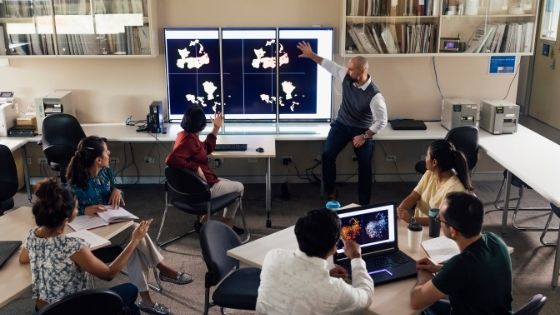Educators endeavor to offer each student the greatest possible learning experience. However, this may be challenging when not all pupils enter the classroom with the same preparation to learn. All educators strive to provide an equitable learning environment where all students have an equal chance to achieve. And using the right educational technology can help a lot in this endeavor.
1. Personalized Education
Students do not all acquire knowledge simultaneously, at the same pace, or with the same degree of understanding. As a result, current research has concentrated on two teaching strategies that cater to kids’ particular requirements.
When differentiated teaching is done correctly, and with the appropriate tools, instructors can guarantee that all students have an equal chance to learn.
Personalized learning extends this method by understanding that students become more motivated and engaged when they take an active part in their education. Recent Rand Corporation research established a correlation between individualized learning and success.
Technological advancements like K12 Chromebook monitoring and other solutions may be solely responsible for a teacher’s capacity to differentiate and personalize education, particularly when class numbers increase. The Student Wellness Polls may foster student agency as students reflect on their performance and set personal development objectives.
2. Guided Internet Access
The disadvantages of lower-income Americans in terms of technology are not restricted to their hardware. Additionally, there is a digital divide when it comes to internet access.
Without dependable internet connectivity, students are at a disadvantage when thriving in a twenty-first-century job. Schools invest in dependable and fast internet access to help satisfy these demands. The non-profit group EducationSuperhighway reports that most American schools now have internet connectivity at a speed of 100 kbps.
The digital gap continues to narrow. According to a PEW study, the majority of Americans own a smartphone. However, the disparity remains large when using technology at home for educational reasons.
As a result, many American students rely on their cell phones to access the internet. And although a smartphone may assist students in developing fundamental research skills or contributing to a classroom social media thread, it also has significant limitations
To guarantee that all students have comparable chances, schools are developing ways to provide pupils with the necessary capabilities. Many schools provide pupils with computers or tablets during class to help bridge the digital divide. Additionally, providing students with access to a class set of devices during the school day is an efficient strategy to guarantee children develop the technical abilities necessary for a future job.
3. Support for Socio-Emotional Well-Being
Along with significant research—such as this study published in Education Leadership—instructors know from personal experience that a student’s emotional state directly influences their capacity to learn. Indeed, well-being is associated with various characteristics that influence learning outcomes. This association exists in every kind of educational circumstance and environment.
4. Making More Time For Questions
A revolution has been built in schools around the globe to restore teachers’ autonomy. That is, freedom to wander the classroom. Some refer to it as “free-range” education. Others refer to it as “untethered teaching.” Whatever name is used, the movement’s aims are the same: to establish a wireless technology environment that enhances education and enables a flexible learning environment.
For years, instructors wrestled with the technological paradox. Although technology offered the potential to improve students’ learning results, all those cables severely hampered a teacher’s capacity to check in with their pupils. Not any longer.
Teachers may show presentations, films, and student work to the front of the classroom using wireless technology and then roam the classroom interacting with students. This allows them to monitor students’ on-task behavior and engagement and give one-on-one assistance to those who need it.
Teachers may meet individuals’ specific strengths via flexible learning and classroom architecture. Students who cannot keep up with the teacher’s speed of learning are not left behind. While kids who are prospering and comprehending the content are not bored while waiting for the instructor to continue,
5. Collaborative Education
Collaborative learning is made possible by instructional technology in unmatched ways. Technology advancements have made exchanging information simpler than ever. Today’s instructors have access to digital technologies that enable students to collaborate outside of the classroom, debating ideas and completing assignments remotely, circumventing barriers such as traditional classroom hours or physical location.
Additionally, instructional technology enables students to collaborate with instructors outside of the classroom, debating concepts and asking questions. For instance, professors may host digital office hours, making themselves accessible to students through instant messaging or video chat to assist them with the day’s assignments.
Wrapping Up
Some pupils are hungry and exhausted when they come to class. Others feel unprepared for the day’s responsibilities. They may lack the resources essential to succeed or face various external difficulties.













